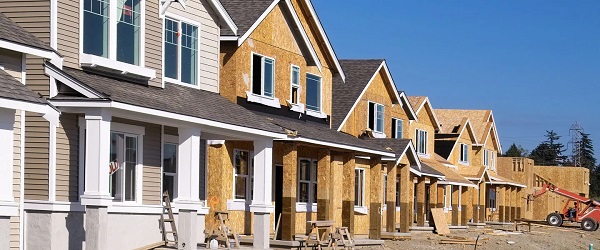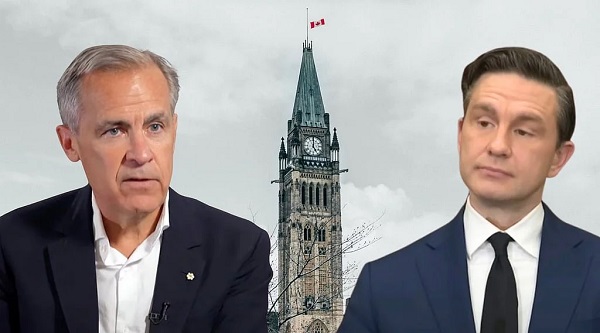Business
Taxpayers criticize Trudeau and Ford for Honda deal

From the Canadian Taxpayers Federation
Author: Jay Goldberg
The Canadian Taxpayers Federation is criticizing the Trudeau and Ford governments to for giving $5 billion to the Honda Motor Company.
“The Trudeau and Ford governments are giving billions to yet another multinational corporation and leaving middle-class Canadians to pay for it,” said Jay Goldberg, CTF Ontario Director. “Prime Minister Justin Trudeau is sending small businesses bigger a bill with his capital gains tax hike and now he’s handing out billions more in corporate welfare to a huge multinational.
“This announcement is fundamentally unfair to taxpayers.”
The Trudeau government is giving Honda $2.5 billion. The Ford government announced an additional $2.5 billion subsidies for Honda.
The federal and provincial governments claim this new deal will create 1,000 new jobs, according to media reports. Even if that’s true, the handout will cost taxpayers $5 million per job. And according to Globe and Mail investigation, the government doesn’t even have a proper process in place to track whether promised jobs are actually created.
The Parliamentary Budget Officer has also called into question the government’s claims when it made similar multi-billion-dollar handouts to other multinational corporations.
“The break-even timeline for the $28.2 billion in production subsidies announced for Stellantis-LGES and Volkswagen is estimated to be 20 years, significantly longer than the government’s estimate of a payback within five years for Volkswagen,” wrote the Parliamentary Budget Officer said.
“If politicians want to grow the economy, they should cut taxes and red tape and cancel the corporate welfare,” said Franco Terrazzano, CTF Federal Director. “Just days ago, Trudeau said he wants the rich to pay more, so he should make rich multinational corporations pay for their own factories.”
Business
The numbers Canada uses to set policy don’t add up

This article supplied by Troy Media.
 By Roslyn Kunin
By Roslyn Kunin
Canada’s biggest policy mistakes come from treating complex systems as simple math
Here is an old story with a valuable message. In the directed economy of the USSR, it was the government, not markets, that decided what and how much was to be produced.
Take metalware for the kitchen: mugs, mixing bowls, pots, pans, dishpans and washtubs. The government decided how much people needed and ordered the industry to produce that many tons at the lowest possible price.
Quotas were met, the appropriate tonnage was produced and costs were controlled. But no mug, pot or dishpan was to be found. The industry found that the easiest way to meet its cost and quantity requirements was to produce nothing but washtubs.
It is a valuable reminder today for Canada: when policymakers rely on a single number to steer complex systems, they almost always get the wrong results.
There are at least three reasons why we need better analysis in policymaking. The first is that the things inside a total number are not all the same. Mugs and washtubs are not interchangeable.
The second is unintended consequences. How did devoting metal to domestic products affect other metal-using sectors like automobile production? The same pattern appears in modern Canadian policy: shifting one number often disrupts systems we depend on elsewhere.
Third, picking a number to solve a problem is often an easy way to avoid doing a rigorous cost-benefit analysis that would offer a clear indication of the overall effectiveness and impact of any decision. Too often, our debates jump straight to targets instead of evidence.
We like to think that policy decisions in Canada are decided on more than just picking a magic number and waiting for it to solve a problem. That is not always the case. Policies for both the housing market and labour market could benefit from more detailed analysis.
Canada faces a severe housing shortage, not only in the major cities, but also in smaller centres as people move there from metro areas and push up home prices. One-number thinking has led the government to drastically cut back the number of people coming into Canada on a permanent or temporary basis believing that thousands of fewer new arrivals will make available thousands more housing units.
This is not likely, especially when considering temporary workers. Many of these are international students. The number of housing units freed by their absence is significantly lower than the reduction in student visas issued. Many students stay in dorms or other student housing. Others crowd together in apartments or houses to save costs. Not much housing is freed to deal with the shortage.
One serious unintended consequence of cutting back student visas is the negative impact on educational institutions which have been relying on the generous fees that foreign students pay to deal with the constrained fees and limited funding imposed on them by governments.
Cutting back on the number of temporary foreign workers (TFWs) will also have a minimal effect on the supply of housing in the major centres where shortages are most severe. TFWs are most needed in industries like agriculture and in smaller centres where their absence will be sorely felt.
Looking at the labour market, it is unrealistic to expect unemployed Canadians to fill these job gaps. People in major cities rarely move to remote areas to take lower-paying work. Cutting back TFWs will harm the sectors and places that rely
on them. Differences in geography, occupations and preferences ensure that workers are not interchangeable.
Homes are not interchangeable either. They have to be in the places where people choose to live, and they have to be affordable. In many places like Vancouver, the actual and potential number of homes is enough to house everyone who needs one, especially if the development permits now being sought result in actual construction. But in cities like Vancouver and Toronto, the benchmark price of a home has risen far faster than wages for more than a decade, making many new units unaffordable even when supply increases.
Builders are now having trouble filling existing units because they did not pay enough attention to affordability. The cost of producing a housing unit is higher than what most Canadians can pay, even after the size of a home has shrunk below what most Canadians are used to. As a result, builders are lowering prices and rents and offering other inducements to potential residents. Builders are now lowering prices and rents and/or offering other inducements to potential residents.
Let us hope that our educational institutions will be able to produce, and our immigration policies will allow us to admit, qualified people who can develop and implement policies based on more than one number.
Canada needs decisions grounded in reality, not wishful targets.
Dr. Roslyn Kunin is a respected Canadian economist known for her extensive work in economic forecasting, public policy, and labour market analysis. She has held various prominent roles, including serving as the regional director for the federal
government’s Department of Employment and Immigration in British Columbia and Yukon and as an adjunct professor at the University of British Columbia. Dr. Kunin is also recognized for her contributions to economic development, particularly in Western Canada.
Troy Media empowers Canadian community news outlets by providing independent, insightful analysis and commentary. Our mission is to support local media in helping Canadians stay informed and engaged by delivering reliable content that strengthens community connections and deepens understanding across the country.
Business
Canada is failing dismally at our climate goals. We’re also ruining our economy.

From the Fraser Institute
By Annika Segelhorst and Elmira Aliakbari
Short-term climate pledges simply chase deadlines, not results
The annual meeting of the United Nations Conference of the Parties, or COP, which is dedicated to implementing international action on climate change, is now underway in Brazil. Like other signatories to the Paris Agreement, Canada is required to provide a progress update on our pledge to reduce greenhouse gas (GHG) emissions by 40 to 45 per cent below 2005 levels by 2030. After decades of massive government spending and heavy-handed regulations aimed at decarbonizing our economy, we’re far from achieving that goal. It’s time for Canada to move past arbitrary short-term goals and deadlines, and instead focus on more effective ways to support climate objectives.
Since signing the Paris Agreement in 2015, the federal government has introduced dozens of measures intended to reduce Canada’s carbon emissions, including more than $150 billion in “green economy” spending, the national carbon tax, the arbitrary cap on emissions imposed exclusively on the oil and gas sector, stronger energy efficiency requirements for buildings and automobiles, electric vehicle mandates, and stricter methane regulations for the oil and gas industry.
Recent estimates show that achieving the federal government’s target will impose significant costs on Canadians, including 164,000 job losses and a reduction in economic output of 6.2 per cent by 2030 (compared to a scenario where we don’t have these measures in place). For Canadian workers, this means losing $6,700 (each, on average) annually by 2030.
Yet even with all these costly measures, Canada will only achieve 57 per cent of its goal for emissions reductions. Several studies have already confirmed that Canada, despite massive green spending and heavy-handed regulations to decarbonize the economy over the past decade, remains off track to meet its 2030 emission reduction target.
And even if Canada somehow met its costly and stringent emission reduction target, the impact on the Earth’s climate would be minimal. Canada accounts for less than 2 per cent of global emissions, and that share is projected to fall as developing countries consume increasing quantities of energy to support rising living standards. In 2025, according to the International Energy Agency (IEA), emerging and developing economies are driving 80 per cent of the growth in global energy demand. Further, IEA projects that fossil fuels will remain foundational to the global energy mix for decades, especially in developing economies. This means that even if Canada were to aggressively pursue short-term emission reductions and all the economic costs it would imposes on Canadians, the overall climate results would be negligible.
Rather than focusing on arbitrary deadline-contingent pledges to reduce Canadian emissions, we should shift our focus to think about how we can lower global GHG emissions. A recent study showed that doubling Canada’s production of liquefied natural gas and exporting to Asia to displace an equivalent amount of coal could lower global GHG emissions by about 1.7 per cent or about 630 million tonnes of GHG emissions. For reference, that’s the equivalent to nearly 90 per cent of Canada’s annual GHG emissions. This type of approach reflects Canada’s existing strength as an energy producer and would address the fastest-growing sources of emissions, namely developing countries.
As the 2030 deadline grows closer, even top climate advocates are starting to emphasize a more pragmatic approach to climate action. In a recent memo, Bill Gates warned that unfounded climate pessimism “is causing much of the climate community to focus too much on near-term emissions goals, and it’s diverting resources from the most effective things we should be doing to improve life in a warming world.” Even within the federal ministry of Environment and Climate Change, the tone is shifting. Despite the 2030 emissions goal having been a hallmark of Canadian climate policy in recent years, in a recent interview, Minister Julie Dabrusin declined to affirm that the 2030 targets remain feasible.
Instead of scrambling to satisfy short-term national emissions limits, governments in Canada should prioritize strategies that will reduce global emissions where they’re growing the fastest.

Elmira Aliakbari
-

 Crime2 days ago
Crime2 days ago‘Modern-Day Escobar’: U.S. Says Former Canadian Olympian Ran Cocaine Pipeline with Cartel Protection and a Corrupt Toronto Lawyer
-

 National1 day ago
National1 day agoPsyop-Style Campaign That Delivered Mark Carney’s Win May Extend Into Floor-Crossing Gambits and Shape China–Canada–US–Mexico Relations
-

 COVID-1922 hours ago
COVID-1922 hours agoCovid Cover-Ups: Excess Deaths, Vaccine Harms, and Coordinated Censorship
-

 Great Reset13 hours ago
Great Reset13 hours agoEXCLUSIVE: The Nova Scotia RCMP Veterans’ Association IS TARGETING VETERANS with Euthanasia
-

 Bruce Dowbiggin23 hours ago
Bruce Dowbiggin23 hours agoBurying Poilievre Is Job One In Carney’s Ottawa
-

 Health1 day ago
Health1 day agoCDC’s Autism Reversal: Inside the Collapse of a 25‑Year Public Health Narrative
-

 Alberta2 days ago
Alberta2 days agoAlberta to protect three pro-family laws by invoking notwithstanding clause
-

 Alberta1 day ago
Alberta1 day ago‘Weird and wonderful’ wells are boosting oil production in Alberta and Saskatchewan




